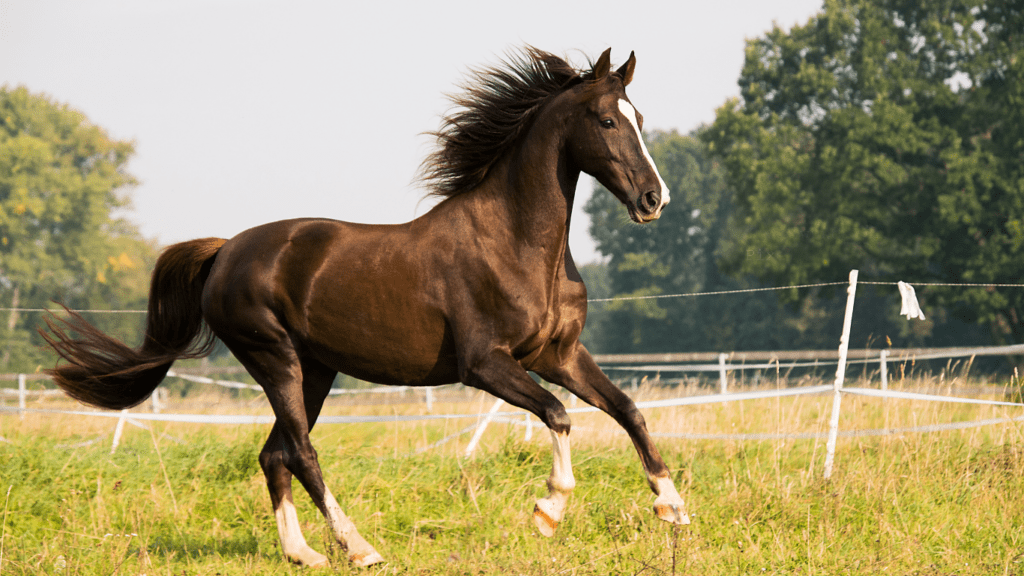Historical Perspective on Horse Breeding
Horse breeding has a storied history that dates back thousands of years. Ancient civilizations, including the Greeks, Romans, and Chinese, dedicated significant efforts to breeding horses suited for various purposes, from warfare to transportation. Selective breeding practices were recorded as early as 1000 BCE.
In the Middle Ages, European nobility began focusing on breeding horses for sport, giving rise to breeds like the Thoroughbred. Originating in 17th-century England, the Thoroughbred became the cornerstone of modern horse racing. Importing Arabian, Turkoman, and Barb horses created this swift and enduring breed.
By the 18th century, scientific advancements began influencing breeding practices. The publication of horse pedigrees and the establishment of breeding registries improved the accuracy of selecting superior lineage. In 1791, the General Stud Book was published in England, officially recording Thoroughbred pedigrees. This helped standardize the breed and enhanced selective breeding efficacy.
In North America, horse breeding evolved alongside the expansion to the West. The American Quarter Horse, developed for its speed over short distances, became popular. The introduction of these breeds to racetracks cemented their roles in competitive racing traditions.
Today’s breeding practices blend historical knowledge with modern science. Techniques such as genetic testing inform decisions, ensuring the continuation of superior traits. Understanding this historical context illuminates the advancements that have shaped contemporary horse breeding and underscores its pivotal role in producing winning racehorses.
Importance of Genetics
Genetics play a crucial role in determining a racehorse’s potential. Understanding inherited traits and bloodline influences is essential for breeders aiming to create champions.
Inherited Traits
Certain traits impact a horse’s racing ability significantly. Speed, stamina, and agility are primarily genetically determined. Genetic markers can indicate a predisposition to these traits, making selective breeding highly effective. For example, the myostatin gene (MSTN) affects muscle development, crucial for sprinting ability. Studies have shown that horses with the “speed gene” variant of MSTN often excel in short-distance races. Height, stride length, and even temperament traits like docility or aggression are inherited, influencing a horse’s overall performance.
Influence of Bloodlines
- Bloodlines significantly affect a horse’s racing potential.
- Certain pedigrees have consistently produced winning horses, making them highly sought after. For example, the bloodline of Secretariat, one of the most famous racehorses, has been influential in breeding programs worldwide.
- Notable stallions and mares in a horse’s ancestry often contribute desirable racing traits.
- Breeders analyze historical performance data and genetic information, ensuring that superior bloodlines continue producing high-caliber racehorses.
- Thoroughbred pedigrees often trace back multiple generations to ensure a lineage rich in racing excellence.
Key Breeding Strategies
To create winning racehorses, breeders employ various strategic approaches. Understanding these methods sheds light on how champions are crafted.
Selective Breeding
Selective breeding focuses on pairing horses with desirable traits. I often assess potential mating pairs by examining their genetic markers, performance history, and physical attributes. For example, I might choose a stallion known for its speed and a mare that excels in stamina. This pairing aims to produce offspring with an ideal balance of speed and endurance.
Breeders frequently consult Thoroughbred pedigrees, tracing back multiple generations to ensure these traits remain consistent. The goal is to harness positive genetic attributes while mitigating less desirable traits, creating racehorses with high potential for success.
Crossbreeding
Crossbreeding involves mating horses from different breeds to combine desirable traits from both. I focus on hybrid vigor, which often results in offspring with superior qualities compared to their parents. For instance, crossing a Thoroughbred with an American Quarter Horse can produce a horse with the speed of a Thoroughbred and the quick acceleration of a Quarter Horse.
Breeders use crossbreeding to introduce new genetic variations, improving overall health and performance. This approach leverages the strengths of different breeds, aiming to create versatile and resilient racehorses.
Technological Advances in Breeding

Technological advances have revolutionized horse breeding, enhancing the ability to create winning racehorses. These innovations support breeders in making informed decisions to optimize desirable traits.
Genetic Testing
Genetic testing plays a critical role in modern breeding. By analyzing a horse’s DNA, breeders can identify specific genetic markers linked to traits such as:
- speed
- stamina
- agility
For instance, the myostatin gene (MSTN) influences muscle development, impacting a horse’s sprinting capability. Using genetic testing, breeders can select horses with optimal genetic profiles, increasing the likelihood of producing high-caliber racehorses. Genetic testing also helps detect hereditary conditions, ensuring only healthy and robust horses are bred.
AI and Data Analytics
AI and data analytics significantly enhance breeding strategies. AI algorithms process vast amounts of data, including pedigrees, performance histories, and genetic information, to predict the best breeding pairs. Breeders use AI to simulate potential outcomes, optimizing pairings for the best possible traits. Data analytics provide actionable insights, identifying trends and patterns that help refine breeding approaches. By leveraging AI and data analytics, breeders can make more precise decisions, ultimately improving the quality of racehorses.
Success Stories of Breeding Champions
Breeding has produced numerous racehorse champions whose lineage and achievements resonate throughout the industry. Notable examples show the profound impact of strategic breeding decisions on the racing field.
Notable Racehorse Lineages
- Certain bloodlines in horse racing are renowned for consistently producing champions.
- The Darley Arabian, one of the three foundation sires of the Thoroughbred breed, has an enduring influence. His progeny include Eclipse, a dominant racehorse whose legacy permeates modern Thoroughbred lines.
- Northern Dancer is another notable sire, revolutionizing breeding with his exceptional speed and stamina. His bloodline has yielded countless winners, including Nijinsky II and Sadler’s Wells.
- Both horses have passed on their impressive genetics, cementing Northern Dancer’s place in breeding history.
Case Studies
Strategic breeding has led to remarkable success stories. Secretariat, often hailed as one of the greatest racehorses, came from a lineage with strong performance traits. His sire, Bold Ruler, was known for speed, while his dam, Somethingroyal, contributed stamina. This combination created a racing legend known for breaking multiple records.
American Pharoah, another stellar example, was bred for excellence. His sire, Pioneerof the Nile, offered a robust genetic foundation, and his dam, Littleprincessemma, complemented this with agility and endurance. This carefully curated lineage resulted in a Triple Crown winner, underscoring the effectiveness of intentional breeding choices.
Each case demonstrates how deliberate and informed breeding decisions translate into champions on the racetrack. The emphasis on genetics, performance history, and a keen selection process is clear in these success stories, showcasing the pivotal role of breeding in achieving racing excellence.
Challenges and Ethical Considerations
Breeding winning racehorses involves significant challenges and ethical considerations. One major challenge is genetic diversity. Inbreeding, often used to consolidate desirable traits, can lead to reduced genetic diversity, increasing the risk of hereditary issues. For example, over-reliance on prominent bloodlines like the Darley Arabian reduces the gene pool, potentially leading to health problems such as respiratory issues or joint disorders.
Another challenge is the prediction of traits. Even with advanced genetic testing and AI, predicting which traits a foal will inherit is complex, and there are no guarantees. Despite selecting parents with optimal genetic profiles, the resulting foal may not possess the desired combination of speed, stamina, and agility.
Ethical considerations also come into play. The welfare of the animals is paramount. Breeders might push ethical boundaries for competitive advantage if they’re not diligent. It’s crucial to ensure breeding practices prioritize the horses’ health and well-being, avoid overbreeding, and provide adequate care. The use of genetic testing must be regulated to prevent exploitation of the animals for racing success at the cost of their natural lives.
Selective breeding also raises ethical questions regarding the natural course of animal development. While creating champions, it can lead to prioritizing certain traits over the overall well-being of the horse. For instance, horses bred solely for speed may not have the necessary physical structure to withstand the rigors of racing, leading to injury.
Addressing these challenges and ethical considerations requires a balanced approach. Breeders should strive to maintain genetic diversity to promote long-term horse health. Using technology responsibly and adhering to ethical guidelines ensures breeding practices create not only winning racehorses but also healthy, well-cared-for animals.


 Pedro Brandon played a crucial role in developing the content strategy for Bet Roll Gamble, ensuring the platform offers timely, accurate, and engaging insights across sports betting, poker, horse racing, and esports. His ability to identify trends and curate relevant content has helped attract a diverse audience, providing bettors with the strategies and updates they need to stay competitive.
Pedro Brandon played a crucial role in developing the content strategy for Bet Roll Gamble, ensuring the platform offers timely, accurate, and engaging insights across sports betting, poker, horse racing, and esports. His ability to identify trends and curate relevant content has helped attract a diverse audience, providing bettors with the strategies and updates they need to stay competitive.